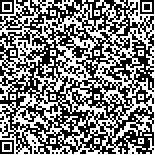下载中心
优秀审稿专家
优秀论文
相关链接
首页 > , Vol. , Issue () : -
摘要

寒温带森林是陆地上分布面积最广的生态系统,具有重要的生态和社会经济价值。定量刻画长时序寒温带森林类型和树种覆盖信息对于量化其生态系统服务功能以及制定森林管理政策具有重要意义。然而受实测覆盖度数据缺乏和多光谱影像光谱信息有限的限制,现有研究较少探讨中分辨率多光谱星载数据(如Landsat卫星)对中国寒温带森林类型覆盖度和具体树种覆盖度进行长时序反演的可行性,并且对于遥感影像获取时间频率(单时相、多时相)对反演精度的影响仍缺乏定量评估。为此,本文利用人工合成样本和随机森林回归模型对黑龙江省孟家岗林场的森林类型和树种覆盖度分别进行了反演。并将模型应用至1986-2020年的Landsat影像,得到孟家岗林场阔叶林和针叶林35年的覆盖度结果。结果表明:(1)对于森林类型覆盖度反演,基于生长季Landsat波段和植被指数(归一化耕作指数以及缨帽变换系数)的中值特征估算的精度最高,阔叶林覆盖度估算 R^2 = 0.76,针叶林覆盖度估算 R^2 = 0.71;(2)对于树种覆盖度反演,基于多时相Landsat波段和植被指数的精度最高,落叶松覆盖度估算 R^2= 0.40,红松覆盖度估算 R^2= 0.23,樟子松覆盖度估算 R^2= 0.61;(3)增加影像获取时间密度对于森林类型覆盖度反演精度的提高没有显著贡献(阔叶林ΔR^2 = 0.01,针叶林ΔR^2= -0.03),但对提高树种覆盖度的反演精度帮助较大(落叶松 ΔR^2= 0.04,红松ΔR^2= 0.07,樟子松ΔR^2= 0.27)。本文结合人工合成样本和随机森林回归模型的优势,定量评估了不同时间频率的时序光谱特征对森林类型和树种覆盖度反演的精度,为中国北方森林以及全球寒温带森林类型和树种覆盖度的大尺度长时序估算提供了思路。
Cold-temperate forests, recognized as the most extensive terrestrial ecosystems, cover vast areas around the global and hold very important ecological and social values. Accurate mapping of forest type and tree species cover fraction in these forests across space and time is crucial for quantifying ecosystem services and formulating effective forest management policies to ensure their sustainable conservation. However, despite the increasing development of remote sensing technologies, there have been limited studies exploring the feasibility of inverting forest type and tree species cover fraction using medium-resolution multispectral satellite-based data, such as Landsat, in China"s cold-temperate forests. This limitation is primarily attributed to the scarcity of reference data and the restricted spectral information available in multispectral images. Moreover, the quantitative impact of the temporal frequency of data acquisitions (e.g., single-date, multi-date) on mapping forest type and tree species cover fraction remains largely unexplored. The timing and frequency of satellite data acquisition can significantly influence the detection and characterization of dynamic changes in forests, which, in turn, affect the accuracy of mapping forest attributes. To address these gaps, our study aims to map the forest type and tree species cover fraction in Mengjiagang forest, Heilongjiang Province, by employing synthetically mixed data and a random forest regression model. Furthermore, we extend our analysis to three decades (from 1986 to 2020) of the Landsat data, thereby mapping the cover fractions of both broadleaf and needleleaf forests in Mengjiagang forest by using the optimal broadleaf and needleleaf random forest regression model. The results of our study reveal the following key findings: (1) For forest type cover fraction inversion, the random forest regression model based on the growing season median index (including spectral bands, NDTI, and TCT indices) was the optimal model (achieving an R ?^2=0.76 for broadleaf and R ?^2=0.71 for needleleaf, respectively); (2) For tree species cover fraction inversion, the random forest regression model based on the multi-date spectral features (including spectral bands, NDTI, and TCT indices of both growth season and leaf off season) was the optimal model (achieving an R ?^2=0.40 for Larch, R ?^2=0.23 for Korean pine, and R ?^2=0.61 for Mongolian pine, respectively); (3) Increasing the temporal frequency of data acquisition can enhance tree species cover fraction inversion accuracy (achieving an ?R ?^2= 0.04 for Larch, ?R ?^2= 0.07 for Korean pine, and?R ?^2= 0.27 for Mongolian pine, respectively), while its impact on improving forest type cover fraction inversion accuracy was limited. By effectively combining the advantages of synthetically training data and random forest regression, we have successfully mapped the forest type and tree species cover fraction of Mengjiagang forest. Moreover, our study provides a comprehensive analysis that accurately quantifies the influence of temporal data acquisition frequency on mapping forest type and tree species cover fraction. Our study offers valuable insights into the future mapping of forest type and tree species cover fraction across space and time, particularly for regions with similar species composition. The outcomes of this research will make a significant contribution to the understanding and management of cold-temperate forests, thereby supporting their conservation and sustainable use.

